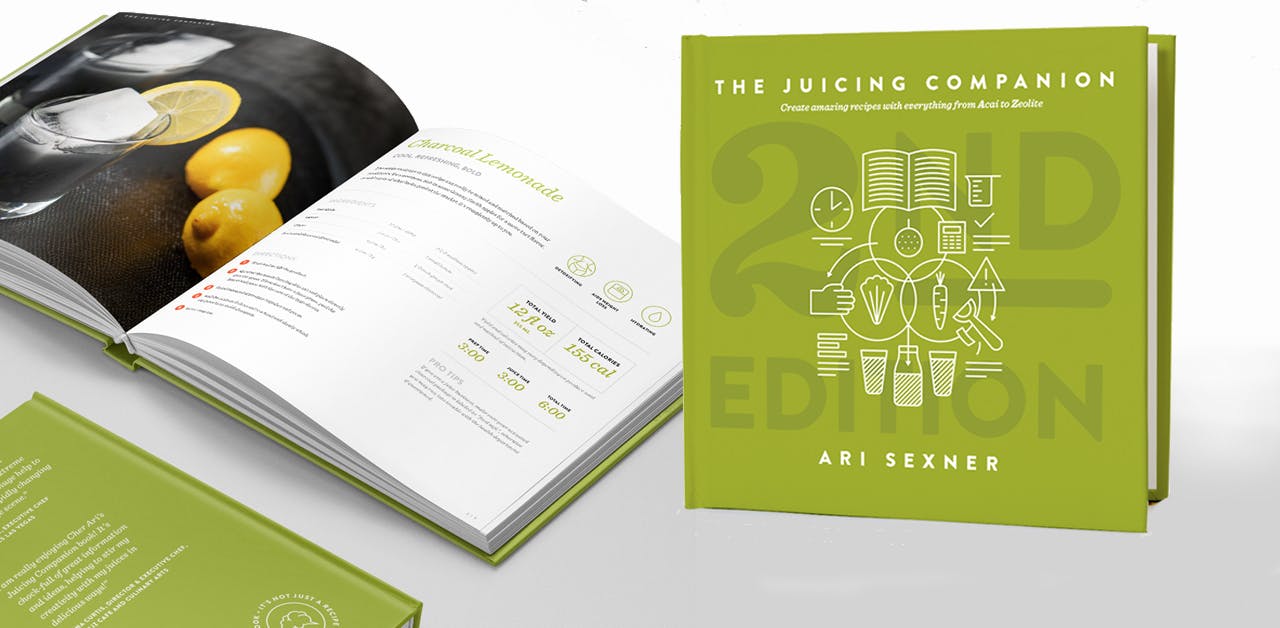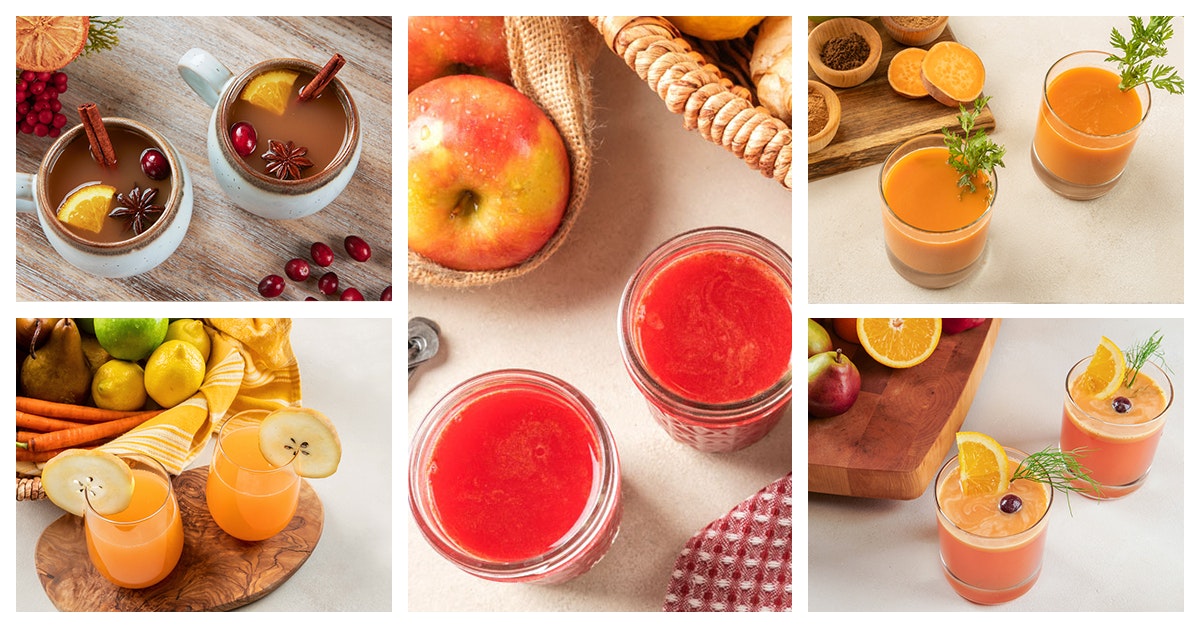Fruit for Juicing in the Fall
1. Apples
Apple season is usually from July to November in the Northern Hemisphere. Apples are rich in dietary fiber, antioxidants, and vitamin C. They may help with heart health, digestion, and reducing the risk of chronic diseases.
2. Pears
Did you know that pears ripen after they’re harvested? Left on the counter for a few days, pears will ripen from the inside out to a succulent sweetness. Pears are a good source of dietary fiber, vitamin C, and vitamin K. They can aid in digestion and support bone health.
3. Cranberries
Cranberries are at their best in the fall and can be hard to find fresh during other times of the year. So, enjoy them while you can. Cranberries are good for your urinary tract and have antioxidants and vitamin C.
4. Grapes
Different varieties of grapes are in season from late summer to early October. Grapes are full of antioxidants, especially resveratrol, which has been linked to heart health benefits. They are also a good source of vitamins and minerals.
5. Persimmons
“The Fruit of the Gods” is usually in season between September and December. Persimmons are a good source of dietary fiber, vitamins, minerals, and antioxidants, which each provide important health benefits.
Note that persimmons work best when peeled and blended with liquid. From there, add it to your juice or smoothie. Because persimmon is a relatively mushy fruit, it usually doesn't work well when ran through a juicer.
6. Figs
Fresh fig season typically runs from August through October. Figs are high in dietary fiber, calcium, potassium, and antioxidants. Their health benefits include the promotion of heart health and bone health.
Note that figs should not be put into your juicer. Figs work best when soaked in liquid before blending, at which point they can be used in smoothies or nut milks. The texture of figs makes them an "unjuiceable" fruit.
7. Lemons and Limes
The best time to harvest citrus fruits is between November and March. They are like a burst of sunshine during these chilly months. Lemons and limes are high in vitamin C and have anti-inflammatory, antioxidant, and antibacterial properties.
8. Raspberries
The raspberry peak season starts in late June or July and continues until it frosts in the south of the US. Berries, in general, are characterized by their highly nutritive compounds, including bioactive compounds that have been associated with protective effects against chronic diseases, such as cardiovascular disease, cancer, Alzheimer’s and other disorders.
9. Kiwifruit
Kiwi that's grown here in the United States is available from October through May. They have a sweet, tart, and bold taste, and they can support heart health, digestive health, and immunity.
10. Pomegranate
“The Jewel of the Fall,” as pomegranates are also known, are filled with sweet, juicy red seeds that are perfect for juicing or even for making cocktails. Most pomegranates grown in the United States come from California and are in season from the end of September through November. Overall, pomegranates are low in calories and fat but high in antioxidants, fiber, vitamins, and minerals.
11. Quince
Often called “The Secret Food of Fall,” quinces may look as delightfully sweet and juicy as an apple or pear, but in its raw form is rather tough, tannic and slightly sour. However, it makes the perfect ingredient for putting some zing in your juice this fall. There are many health benefits of quince, which include cancer prevention, weight loss, skin care, and more, one of with acid reflux relief.
12. Plums
Few other fruits beat the taste of a juicy plum. You'll start seeing plums at the market from late summer, but their season lasts through October. Plums are low in fat and high in fiber. Furthermore, they’re rich in vitamins A, C, D, B6, B12, potassium, magnesium, and iron, and drinking plum juice may keep colds and flu away.
Veggies for Juicing in the Fall
1. Pumpkin & Winter Squash
Although pumpkin is botanically classified as a fruit, we’ll go with the culinary classification as a vegetable. Harvested in September and October, pumpkin varieties are an autumn favorite for Americans. In fact, the U.S. is one of the top producers of pumpkins in the world.
The antioxidant beta-carotene, which gives pumpkins their vibrant orange color, is responsible for many of its potential health perks, one of which is boosting eye-health The American Optometric Association recommends eating more pumpkin because it contains nutrients that may help preserve vision.
2. Carrots
Carrot season takes place between July and November. Carrots are packed with beta-carotene, a powerful antioxidant that converts to vitamin A in the body. They promote good vision, skin health, and immune function.
3. Beets
Beetroot season is mainly from July to November. Beets have plenty of vitamins and minerals, and they're a must-have in every American kitchen. They are high in nitrates, which can help improve blood flow and lower blood pressure. They also contain antioxidants and vitamins that support overall health.
4. Kale
Kale is a hardy cool-season crop that grows best in the fall, tolerating frost and even snow. Kale is a potent nutrient source, containing vitamins A, C, and K, along with calcium and various antioxidants. It supports bone health and provides immune support.
5. Swiss Chard
Swiss Chard is usually grown as a cool-season crop because it grows quickly and easily during the cooler temperatures of fall. With its different colored stems, Swiss chard is not only beautiful, but it is also a nutritional powerhouse. It has a mildly bitter taste, but it’s bioactive compounds pack one healthy punch. One serving of kale juice will give you more than the daily requirement of vitamin K in one cup.
6. Celery
Celery is in season from late summer to early fall. Celery juice brims with vitamins and antioxidants, and it not only hydrates your body but also aids digestion and supports overall well-being.
7. Parsley
In the northern regions, parsley will continue to grow until the snowfall arrives. In milder climates, it is frost-resistant and endures winter. Some of the best-known parsley juice benefits include digestive support, kidney cleansing, reduced body odor, cancer protection, and more. It has been used for medicinal purposes for centuries.
It's Not Just a Juicing Recipe Book, It's a Juicing Idea Book!
If you want your recipes to taste delicious, get this juice recipe guide book.

The concept is simple: Choose which ingredient you want to juice and open to that page in the book to find tasty flavor pairings, nutritional information, and recipe ideas to get you started.
Grab your copy of The Juicing Companion here!
Final Thoughts
Fall offers a bounty of fruits and vegetables that are not only delicious, but also packed with health benefits. Crafting the perfect fall juice is a delightful way to embrace the season's flavors while nourishing your body. Incorporating apples, pears, carrots, beets, Swiss chard, and other seasonal favorites into your juicing recipes provides a burst of vitamins, antioxidants, and fiber.
These juices can boost your immune system, support digestion, and contribute to overall well-being. So, grab your juicer and savor the essence of autumn with these wonderful ingredients, creating vibrant and nutritious juices that celebrate the splendor of fall.


Rate and Comment